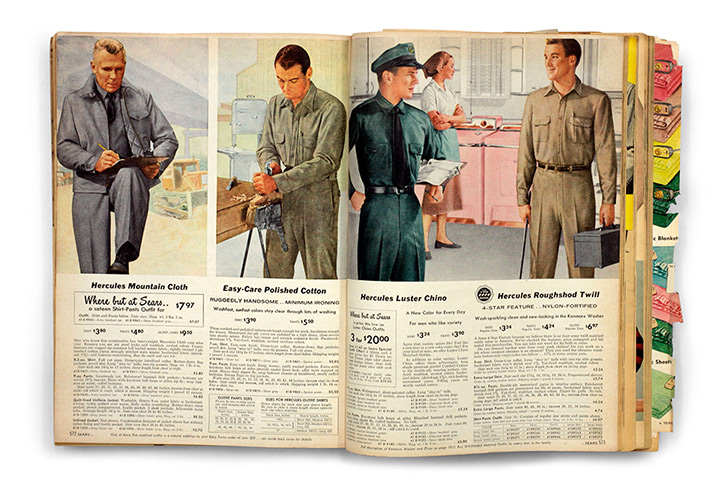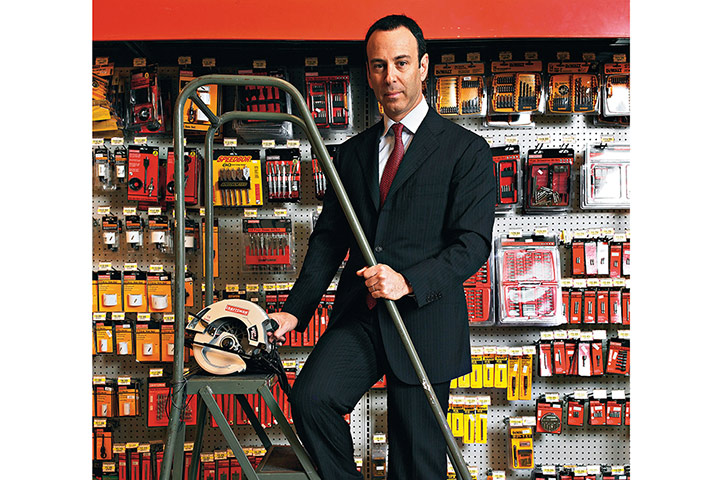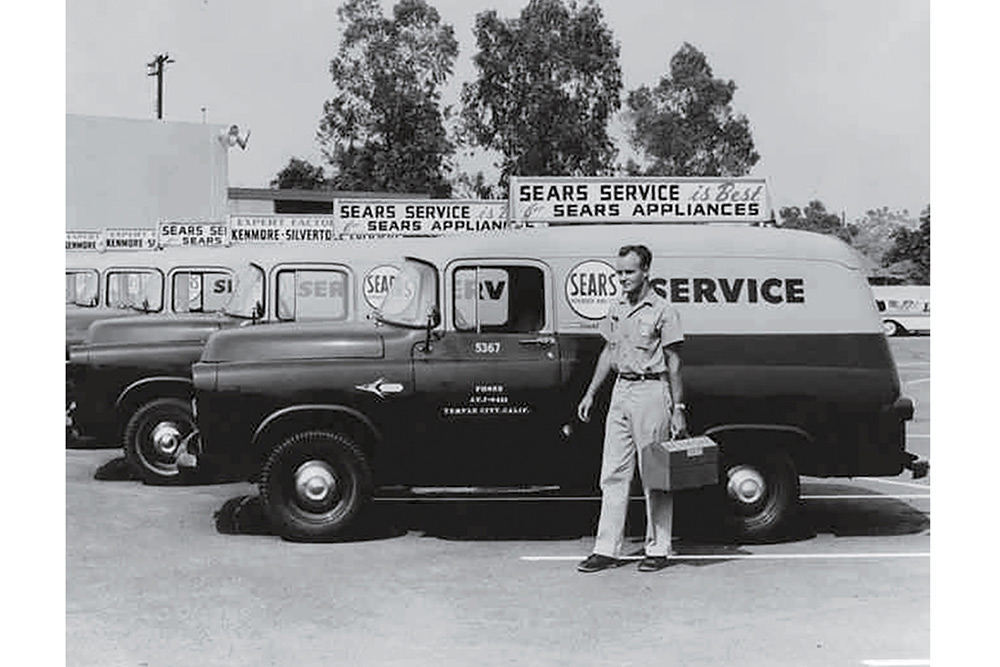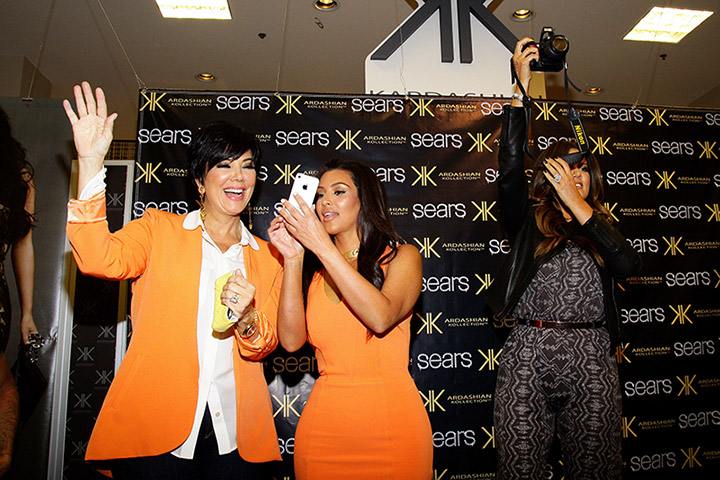这家老牌零售店有机会成为亚马逊的,它做错了什么?
|
50年前的西尔斯(Sears),犹如一台轰鸣不息的经济发动机。就像今天的亚马逊(Amazon)和沃尔玛(Walmart)一样,它是零售业的绝对霸主。1969年,西尔斯的销售额占到整个美国经济的1%。在任何一个季度,三分之二的美国人在那里购物。即使在30年前,它还是遥遥领先的美国头号零售商。 当然,那些日子已经一去不复返了。西尔斯控股于去年10月申请破产保护,自世纪之交以来,该公司已经关闭了数千家门店。《财富》杂志6月刊登了一篇名为《西尔斯的70年自毁之路》的文章,详述了这家零售业巨头的衰落历程。本文将逐一阐述西尔斯曾经手握胜券的四个领域,并展示该公司是如何痛失好局的。 |
Fifty years ago, Sears was an economic dynamo, as dominant in retail as Amazon and Walmart are today. In 1969, Sears sales alone accounted for 1% of the entire U.S. economy, and two-thirds of Americans shopped there in any given quarter. Even 30 years ago, it was America’s largest retailer by a significant margin. Those days are gone, of course. Sears Holdings filed for Chapter 11 bankruptcy last October, and the company has closed thousands of stores since the turn of the century. Fortune captures the sweep of that decline this month in the feature “Sears’ Seven Decades of Self-Destruction.” Here, we examine four arenas where Sears used to hold winning hands, and show how the company misplayed them all. |
****

|
I. 网络是如何丢失的 西尔斯本可以成为电子商务领域里强有力的竞争者。那么,它缘何被抛在后面? 庞大的客户群;庞大的分销网络;对供应商的巨大影响力。这就是如今的亚马逊,以及30年前的西尔斯所拥有的优势。有鉴于此,对于西尔斯来说,电子商务领域的霸主宝座似乎近在咫尺,唾手可得。 在1925年开设第一家门店之前的几十年,西尔斯一直只做目录邮购零售。在20世纪80年代的鼎盛时期,目录邮购部门的年营业额高达40亿美元,并且坐拥海量客户信息。但到那时,邮寄一本1500页商品目录(即所谓的“大书”)的成本,再加上该目录对低利润产品的重视,让这项业务变得无利可图——每天亏损100万美元。 1993年,西尔斯终止了这项业务,并拆除了分销基础设施,同时未能及时更新客户名单。当西尔斯最终在1997年推出一个电子商务网站时,它不得不从头开始重建许多基本元素,这是一项耗时又昂贵的工作。 尽管起步缓慢,西尔斯却在某种程度上成为数字零售业的先驱。Sears.com为电子商务订单提供店内取货服务,这种做法比梅西百货(Macy’s)和塔吉特百货(Target)早了好几年。该网站不仅拥有强大的搜索功能,甚至还提供“虚拟模特”帮助顾客在线试穿衣服。 但遗憾的是,Sears.com仍然是西尔斯的一部分。到本世纪头十年末,西尔斯的商品配置已经变得相当平庸,以至于再多的网络魔法也无法吸引新客户。大批门店的关闭,也让西尔斯无法实施许多零售商推崇的“实体店加网店”策略。市场研究公司eMarketer的数据显示,2013年至2017年,随着西尔斯的门店数量从828家缩减至570家,电子商务销售额下降了50%,降至13亿美元。 |
I. HOW THE WEB WAS LOST Sears could have been an e-commerce contender; here’s why it fell behind. A massive customer base. A vast distribution network. Enormous clout with vendors. That describes Amazon today—and Sears 30 years ago. Thanks to those advantages, e-commerce dominance was arguably Sears’ to lose. Sears was a catalog-only retailer for decades before it opened its first store in 1925. At its peak in the 1980s, the catalog division was a $4-billion-a-year business, perched atop a huge trove of customer information. But by then, the cost of mailing a 1,500-page catalog, known as the Big Book, along with the catalog’s emphasis on low-margin products, had made the business unprofitable. It was losing as much as $1 million a day. In 1993, Sears pulled the plug—and dismantled the distribution infrastructure while failing to keep updated customer lists. When Sears finally launched an e-commerce site in 1997, it had to rebuild many fundamental elements from scratch, a time-consuming and expensive undertaking. Despite the slow start, Sears became something of a digital-retail pioneer. Sears.com offered in-store pickup for e-commerce orders years before Macy’s or Target did. The site boasted great search functions and even offered “virtual models” to help customers try on clothes online. But Sears.com, alas, was still part of Sears. By the late 2000s, Sears’ merchandise assortment was so lackluster that no amount of online wizardry could lure new customers. And the closing of scores of stores deprived Sears of the visibility that sustains retailers’ “bricks and clicks” strategies. Between 2013 and 2017, as Sears’ fleet shrank from 828 to 570, e-commerce sales fell 50%, to $1.3 billion, according to eMarketer. |
****

|
II.门店:不断下沉的西尔斯舰队 这家零售商旗下的购物中心商场日益衰败,从而难以维系其传统的实体店优势。 在2005年策划凯马特(Kmart)与西尔斯合并之后,西尔斯控股的首席执行官埃迪·兰伯特明确表示,他将优先考虑电子商务,而不是百货商场。他彻底地贯彻了这一理念——以至于这两项业务都蒙受了损失。哥伦比亚大学商学院零售研究主管、西尔斯加拿大公司前首席执行官马克·科恩表示:“如果你是一家价值500亿美元的实体零售商,你就不能忽视自己的实体投资组合。” 从2005年到2012年,西尔斯在改善门店方面的花费只有区区33亿美元左右。(西尔斯在此期间回购了60亿美元的股票。)据分析师估计,以每平方英尺店面计算,沃尔玛和塔吉特百货等直接竞争对手的支出比西尔斯高出五倍。 西尔斯甚至切断了基本的店面维护资金,由此形成了一个恶性循环:商店变得越来越破旧,从而降低了它们创造收入的可能性,而这些收入本可以用来装饰店面。但关闭衰败的商店并没有给Sears.com带来流量;关闭也没有帮到保留下来的店面。事实上,西尔斯控股从来没有出现过一年的同店销售额增长——这一指标剔除了新关闭门店的影响。 兰伯特和他的前任们尝试效仿更敏捷的竞争对手。2003年,该公司推出了Sears Grand的前身:一种规模更小,提供食物和药品,并且“远离商场”的店面。2000年至2005年担任西尔斯首席执行官的艾伦·莱西表示,一家典型的Sears Grand店面每年可以创造4500万至6500万美元的收入,是一些位于大型商场,规模两倍于前者的店面所创造收入的两倍多。但西尔斯最终只开了12家Sears Grand分店——数量太少,不足以抵消其他店面亏损和衰败的影响。 |
II. STORES: SEARS’ SINKING FLEET The retailer’s portfolio of aging mall stores put the “ick” in “brick-and-mortar.” After engineering the 2005 merger of Kmart and Sears, Sears Holdings CEO Eddie Lampert made it clear that he would prioritize e-commerce over department stores. He followed through—so much so that both sides of the business suffered. “When you’re a $50 billion brick-and-mortar retailer, you can’t just ignore your brick-and-mortar portfolio,” says Mark Cohen, director of retail studies at Columbia Business School and a former CEO of Sears Canada. Between 2005 and 2012, Sears spent only about $3.3 billion on capital improvements to stores. (Sears bought back $6 billion in shares over that time frame.) Its immediate rivals, including Walmart and Target, outspent Sears five to one on a per-square-foot basis, according to analyst estimates. Cutting off funds for even basic upkeep created a vicious cycle in which stores grew shabbier and shabbier, making them less likely to generate revenue that could be used to spruce them up. But closing decaying stores didn’t drive traffic to Sears.com; nor did closures help the stores that remained. Indeed, Sears Holdings never enjoyed a single year of comparable sales growth, a metric that strips out the impact of newly closed stores. Lampert and his predecessors experimented with stores modeled after nimbler competitors. In 2003 the company launched the Sears Grand prototype—smaller, “off mall” locations with food and pharmacy offerings. Alan Lacy, the CEO of Sears from 2000 to 2005, says the typical Sears Grand pulled in between $45 million and $65 million a year—more than twice as much as some mall-based stores of double that size. But Sears ultimately opened only 12 Grands—too few to blunt the impact of red ink and peeling paint elsewhere. |
****

|
III. 家用电器:浪费主场优势 为什么房主们不愿意继续在西尔斯购置厨房设备,积攒信用积分? 几十年来,西尔斯一直是房主购买洗衣机和烤箱等高价家电的首选之地。2001年,该公司占据了美国家电市场41%的份额;直到2013年,西尔斯家电业务的销售额仍然高达120亿美元,占据29%的市场份额。 今天的家电收入只是其辉煌时期的一小部分。曾经被西尔斯视为“皇冠上的宝石”的家电品牌Kenmore,已经分拆成一家独立的控股公司。颇具讽刺意味的是,你可以在亚马逊上买到这家公司的产品。 到底是哪里出了错?西尔斯在家电领域的主导地位,在很大程度上建立在它的信用卡业务之上。就在20世纪70年代,大批消费者还利用西尔斯商店卡购买家电,以积攒他们的信用积分。但随着Visa和万事达卡(Mastercard)持续增长,西尔斯对该渠道的掌控不再牢固。 更重要的是,大卖场竞争对手家得宝(Home Depot)和劳氏(Lowe’s)开始在更方便购物者的沿公路商业区扩张。与传统的购物中心相比,沿公路商业区对装车车位的限制更少,这使得新参与者可以提供像木材这样的大型商品,也让顾客更容易把它们运走。被困在购物中心的西尔斯永远也无法认真应对这些零售商的入侵。前首席执行官莱西指出,在他执掌期间,西尔斯曾经非常认真考虑收购劳氏公司。“这个机会被白白浪费了。”他哀叹道。 直到2015年,西尔斯技术人员每年还在走访800万户家庭进行家电配送和维修,并收集宝贵的客户信息。这为西尔斯在智能家居和智能家电市场上抢占了先机。但不断恶化的财务困境使得西尔斯无法在“家庭服务”领域坚持到底。百思买(Best Buy)和亚马逊目前在这一领域占据主导地位。 |
III. APPLIANCES: SQUANDERING A HOME-FIELD ADVANTAGE Why homeowners stopped building their kitchens and their credit histories at Sears. For decades, Sears was homeowners’ go-to place for big-ticket appliances like washing machines and ovens. In 2001 it commanded 41% of the U.S. appliance market; as recently as 2013, that $12 billion business gave Sears a 29% market share. Appliance revenue today is a fraction of what it was in its glory days. And Kenmore, Sears’ former crown-jewel brand, has been spun off into a separate holding company whose products, ironically enough, you can buy on Amazon. What went wrong? Sears built its dominance in appliances in part on its credit card business. As recently as the 1970s, legions of consumers built their credit ratings by buying appliances with Sears store cards. But the growth of Visa and Mastercard loosened Sears’ grip on that channel. More crucially, big-box competitors Home Depot and Lowe’s started spreading in strip malls more convenient for shoppers. Strip centers had fewer restrictions on loading docks than traditional malls did, enabling the new players to offer more large goods like lumber and making it easier for customers to cart them away. Stuck in mall stores, Sears could never seriously counteract their incursions. Lacy, the former CEO, notes that Sears looked very hard at buying Lowe’s during his tenure. “That is the one that got away,” he laments. As recently as 2015, Sears technicians were visiting 8 million homes a year for appliance deliveries and repairs, gathering valuable customer info. This offered Sears a head start in the smart-home and smart-appliance markets. But worsening financial woes kept Sears from following through in “home services,” and Best Buy and Amazon now dominate that arena. |
****

|
IV. 服装和家居用品:西尔斯很一般的一面 当消费者更喜欢旧货店,而不是你的购物中心商店时,你就有麻烦了。 西尔斯庞大的电器和工具业务,使其有别于以服装闻名的竞争对手彭尼百货(J.C. Penney)和梅西百货。问题是:人们每隔几年才会买一次冰箱或电钻,而他们每年会置办三到四次衣服。 在20世纪90年代,时任西尔斯首席执行官的亚瑟·马丁内斯致力于推动西尔斯销售高品质服装和家居用品,还特意发布了一个以“西尔斯更柔软的一面”为主题,构思巧妙的广告宣传活动,试图以此来解决这一难题。但在上述商品类别中,这家零售商从未赢得消费者的心。“西尔斯很难与那些不想跟它产生联系的品牌搞好关系。”前西尔斯在线服装业务主管,目前供职于研究公司Gartner L2的查德·布莱特这样说道。彭尼百货和梅西百货向那些在它们店内销售产品的知名供应商施压,敦促后者不要在另一家连锁店过度曝光。西尔斯并不以时装闻名这一事实,也吓跑了许多品牌。 即使西尔斯确实吸引了令人向往的品牌,其日益蹩脚的门店也损害了这种势头。2010年与快时尚零售商Forever 21的合作并没有走多远;2011年,就连如日中天的“卡戴珊旋风”,也未能阻止她们在西尔斯推广的服饰品牌Kardashian Kollection彻底失败。情况变得越来越糟糕。在2016年的一项调查中,女性消费者表示,她们宁愿去旧货商店Goodwill买衣服,也不愿意去西尔斯。 糟糕的时机毁掉了一个“潜在”的合作关系。前首席执行官莱西表示,2004年,他曾经与玛莎·斯图尔特商谈,试图邀请她为西尔斯设计家居用品——斯图尔特在凯马特销售的一个产品系列非常成功。由于斯图尔特被判犯有与一桩内幕交易案有关的罪名,相关谈判最终搁浅。“我们差点就达成交易了,然后玛莎进了监狱。”莱西说。“这真的是造化弄人。”(财富中文网) 本文另一版本登载于《财富》杂志2019年6月刊,标题为《西尔斯的70年自毁之路》。 译者:任文科 |
IV. APPAREL AND HOME GOODS: THE SO-SO SIDE OF SEARS When shoppers prefer thrift stores to your mall stores, you’ve got a problem. Sears’ huge appliance and tools businesses distinguished it from rivals like J.C. Penney and Macy’s, which were best known for apparel. The problem: People buy a fridge or power drill only once every few years, while they stock up on clothing three or four times a year. In the 1990s, then-CEO Arthur Martinez tackled the dilemma by committing Sears to selling higher-quality apparel and home goods, supported by the clever “Softer Side of Sears” ad campaign. But the retailer never caught on with consumers in those categories. “Sears struggled with brands not wanting to be associated with it,” says Chad Bright, a former Sears online apparel executive and a sector leader for big-box stores at Gartner L2. Penney’s and Macy’s pressured better-known vendors that sold in their stores, urging them not to overexpose themselves by selling through another chain. The fact that Sears simply wasn’t known for fashion scared others away. Even when Sears did lure desirable brands, its increasingly dumpy stores hurt momentum. A 2010 partnership with fast-fashion retailer Forever 21 didn’t go far; in 2011, even peak Kardashian mania couldn’t keep the Kardashian Kollection from flopping. Things got so bad that in a 2016 survey, female shoppers said they preferred thrift store Goodwill over Sears for clothing. Bad timing undid one “what if” partnership. Former CEO Lacy says that in 2004, he was in talks with Martha Stewart, who had a successful product line at Kmart, to create home goods for Sears. The talks were scotched by Stewart’s conviction on charges related to an insider-trading case. “We were darn close to getting that done—then Martha goes to jail,” Lacy says. “That was a bit of a snag.” A version of this article appears in the June 2019 issue of Fortune with the headline “Seven Decades of Self-Destruction.” |













